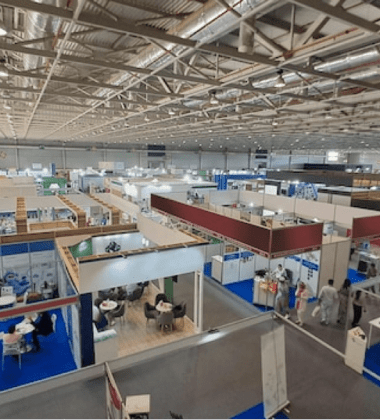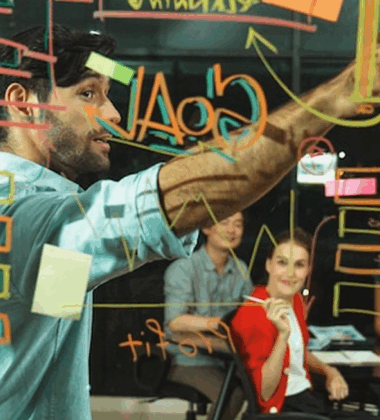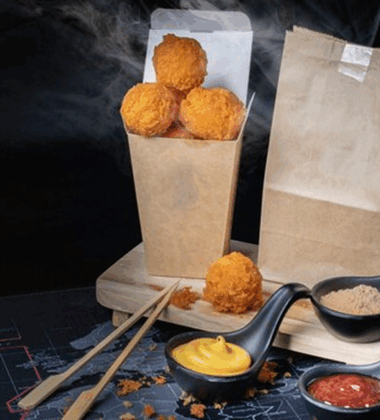In the crowded and competitive atmosphere of global expos, it’s not the loudest booth that wins attention—it’s the most memorable one. Exhibitors at the Global Products Expo 2025, scheduled for June 26–28 at the New Jersey Expo Center, are increasingly embracing a powerful strategy to stand out: brand storytelling through immersive booth experiences.
Gone are the days of static banners and printed brochures. Today, success lies in transforming your booth into a narrative space—a living story where attendees don’t just learn about your brand; they feel it, interact with it, and take part in it.
What Is Brand Storytelling (and Why Does It Matter at Trade Shows)?
Brand storytelling is the art of conveying your brand’s values, purpose, and personality through narrative-driven experiences. At trade shows, this involves turning your booth into more than a promotional setup—it becomes an interactive journey that connects emotionally with visitors.
Think of it like this: Instead of saying “we’re sustainable”, you show how your products are made, let people touch the materials, taste the difference, and even meet the growers. Storytelling humanizes your brand and turns a product pitch into a powerful connection.
Why Immersive Storytelling Matters at the Global Products Expo
With thousands of brands vying for buyer attention at the Global Products Expo USA, attendees don’t have time to visit every booth. They’ll prioritize the ones that pull them in, both visually and emotionally.
Here’s why immersive brand storytelling works:
- Engagement: Stories are 22x more memorable than facts alone.
- Trust: Emotional connection drives brand trust—especially in industries like food, wellness, and sustainability.
- Conversion: People don’t just buy products—they buy stories they believe in.
How to Transform Your Booth into an Immersive Story
To bring your brand story to life, your booth must do more than display—it must immerse, interact, and inspire. Here’s how:
1. Define Your Core Narrative
Before designing anything, ask: What story are we telling?
Is it about innovation? Heritage? Sustainability? Empowerment?
Example: A coffee brand might tell the story of its beans from farm to cup, spotlighting the farmers, brewing techniques, and ethical sourcing.
2. Design for the Senses
Use multi-sensory elements to make your story visceral:
- Sight: Interactive screens, bold colors, live visuals
- Sound: Ambient audio, storytelling voiceovers
- Touch: Textures that reflect your product (e.g., recycled packaging)
- Smell & Taste: Scent branding and product sampling for food and beverage brands
3. Use Technology as a Narrative Tool
Tech isn’t just for flash—it’s for depth. Examples:
- AR/VR: Let users virtually visit your farm, lab, or production line
- Touchscreens: Allow visitors to explore your product timeline or mission
- QR codes: Deliver bonus content or personal stories right to their phones
4. Create “Instagrammable” Story Moments
Social media-ready installations act as digital word-of-mouth. A single well-lit, emotionally resonant photo spot can:
- Drive UGC (user-generated content)
- Expand your booth’s reach
- Reinforce your brand’s tone visually
Example: A wellness brand might create a serene, plant-filled “Zen pod” that illustrates its stress-reducing tea line.
Real-World Example: Turning a Product Into a Personal Journey
Let’s say you’re launching a new line of upcycled snacks. Instead of a banner that reads “Sustainable & Delicious,” your booth could:
- Offer visitors a guided tasting flight with info cards about where each ingredient came from
- Include videos from the farmers who supply you
- Let users “build their snack” digitally based on food waste reduction goals
This approach doesn’t just inform—it involves. That’s the difference brand storytelling makes.
Checklist: Is Your Booth Storytelling-Ready?
| Element | Description |
| Narrative | Clear, emotional core message |
| Visual Identity | Cohesive colors, lighting, and layout |
| Interactive Features | Screens, demos, games, quizzes |
| Sensory Integration | Touch, taste, smell components |
| Staff Roleplay | Booth reps act as story guides, not sellers |
| Takeaways | Flyers, samples, or digital content that extends the story |
The Future of Trade Shows Is Experiential
The Global Products Expo 2025 will spotlight thousands of innovative brands. But those that lead with brand storytelling—not just marketing—will be the ones people remember long after they leave the show floor.
A booth built around narrative offers more than information—it delivers meaning, emotion, and trust. In today’s saturated marketplace, that’s what turns curious visitors into long-term brand advocates.





